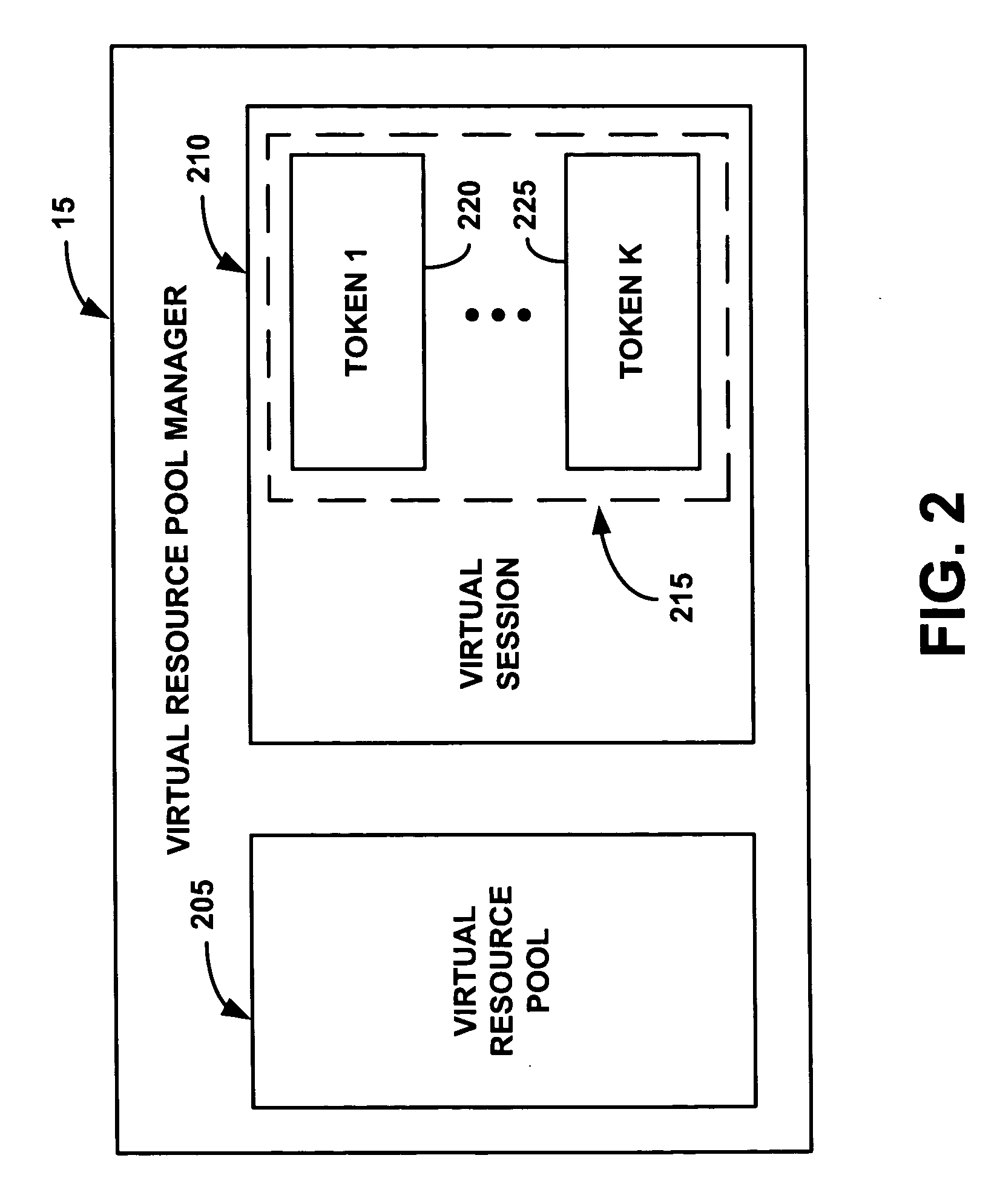System and method for managing resources in a distributed storage system
- Summary
- Abstract
- Description
- Claims
- Application Information
AI Technical Summary
Benefits of technology
Problems solved by technology
Method used
Image
Examples
Embodiment Construction
[0046]FIG. 1 portrays an exemplary overall environment in which a system, a service, a computer program product, and an associated method (the resource management system IO or “the system 10”) for enforcing resource utilization in a distributed system (a distributed storage system 100) according to the present invention may be used. System 10 comprises a virtual resource pool manager 15, a token manager 20, and an allocation pool manager 25.
[0047] System 10 includes a software programming code or computer program product that is typically embedded within or installed on a computer. The virtual resource pool manager 15 is embedded within or installed on a server 30. The token manager 20 is embedded within or installed on a computer functioning as a client server (also known as a client) such as, for example, a client 1, 35, a client 2, 40, through a client M, 45 (collectively referenced herein as clients 50).
[0048] The allocation pool manager 25 is embedded within or installed on a...
PUM
 Login to View More
Login to View More Abstract
Description
Claims
Application Information
 Login to View More
Login to View More - R&D
- Intellectual Property
- Life Sciences
- Materials
- Tech Scout
- Unparalleled Data Quality
- Higher Quality Content
- 60% Fewer Hallucinations
Browse by: Latest US Patents, China's latest patents, Technical Efficacy Thesaurus, Application Domain, Technology Topic, Popular Technical Reports.
© 2025 PatSnap. All rights reserved.Legal|Privacy policy|Modern Slavery Act Transparency Statement|Sitemap|About US| Contact US: help@patsnap.com



